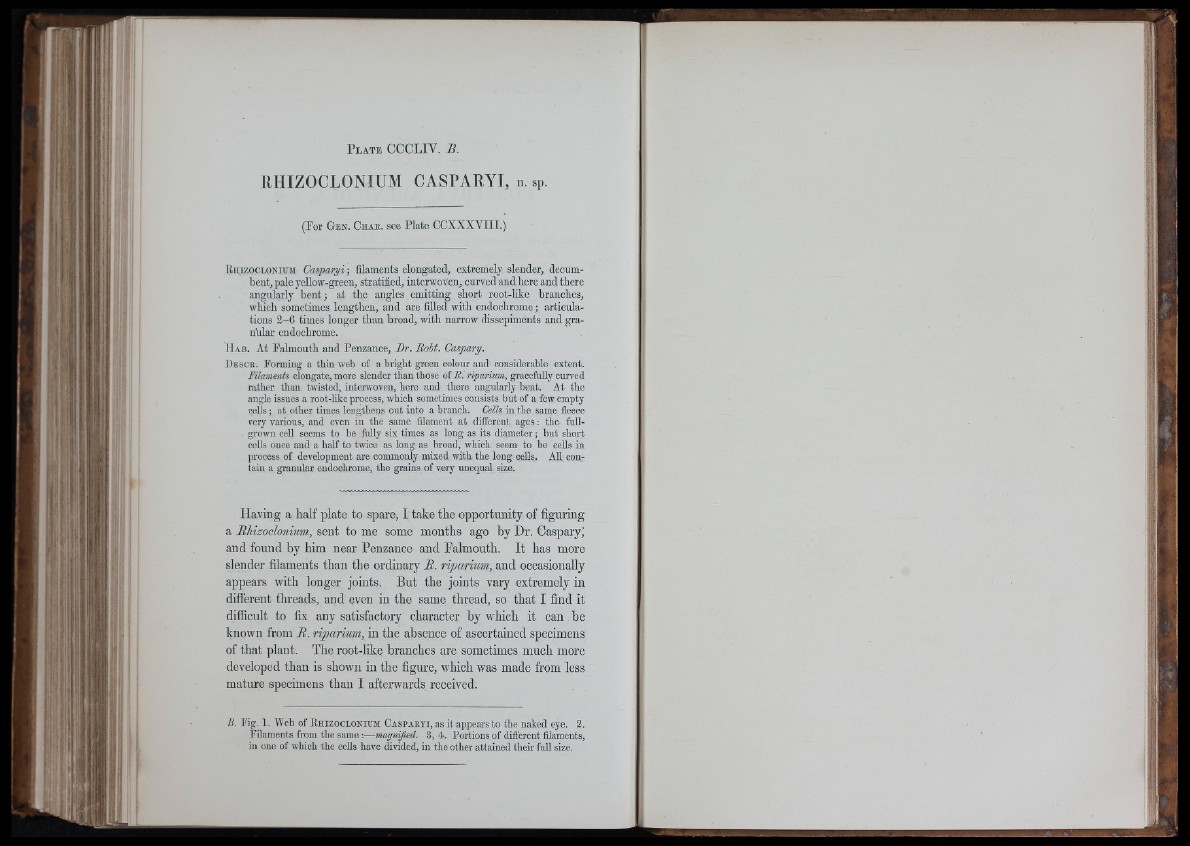
P l a t e CCCLIV. JB.
RHIZOCLONIUM CASPARYI, n. sp.
(For Gen. Chau, see Plate C CX X X V III.)
Riiizoclonium Casparyi; filam en ts e lo n g a ted , ex tr em e ly slen d e r , d e cum b
en t, pale y e llow -g r e en , stratified, in te rw o v en , cu rv ed and h e r e an d th ere
an gula r ly b e n t ; a t th e a n g le s em it tin g sho r t ro o t-lik e bran ch e s,
w liich som e tim e s le n g th e n , and are filled w ith en d o ch rom e ; a r ticu la tio
n s 2 - 6 tim e s lo n g e r th an b road, w ith narrow d issep im en ts an d g ra n
u la r en d o ch rom e.
IIa b . A t Falmouth and Penzance, Dr. BoU. i
Desor. Forming a thin web of a bright green colour and considerable extent.
Filaments elongate, more slender than those of R. riparium, gracefidly curved
rather than twisted, interwoven, here and there angularly bent. At the
angle issues a root-like process, which sometimes consists but of a few empty
cells; at other times lengthens out into a branch. Cells in the same fleece
very various, and even in the same filament at different ages: the full-
grown cell seems to he fully six times as long as its diameter; but short
ceUs once and a half to twice as long as broad, which seem to be cells in
process of development are commonly mixed with the long cells. All contain
a granular endochrome, the grains of very unequal size.
Having a half plate to spare, I take the opportunity of figuring
a BMzodonium, sent to me some months ago by Dr. Caspary)
and found by him near Penzance and Palmouth. It has more
slender filaments than the ordinary B. riparium, and occasionally
appears with longer joints. But the joints vary extremely in
different threads, and even in the same thread, so that I find it
difficult to fix any satisfactory character by which it can be
known from B,. riparium, in the absence of ascertained specimens
of that plant. The root-like branches are sometimes much more
developed than is shown in the figure, which was made from less
mature specimens than I afterwards received.
B. Fig. 1. Web of Khizoclonium Casparyi, as it appears to tbe naked eye. 2.
Filaments from the same :—magnijied. 3, 4. Portions of different filaments,
in one of whicb the cells have divided, in the other attained their full size.